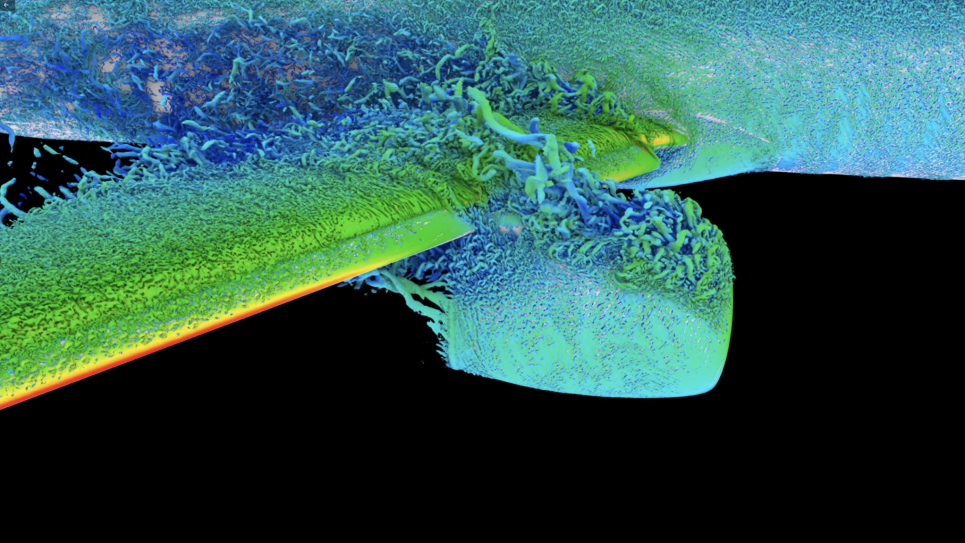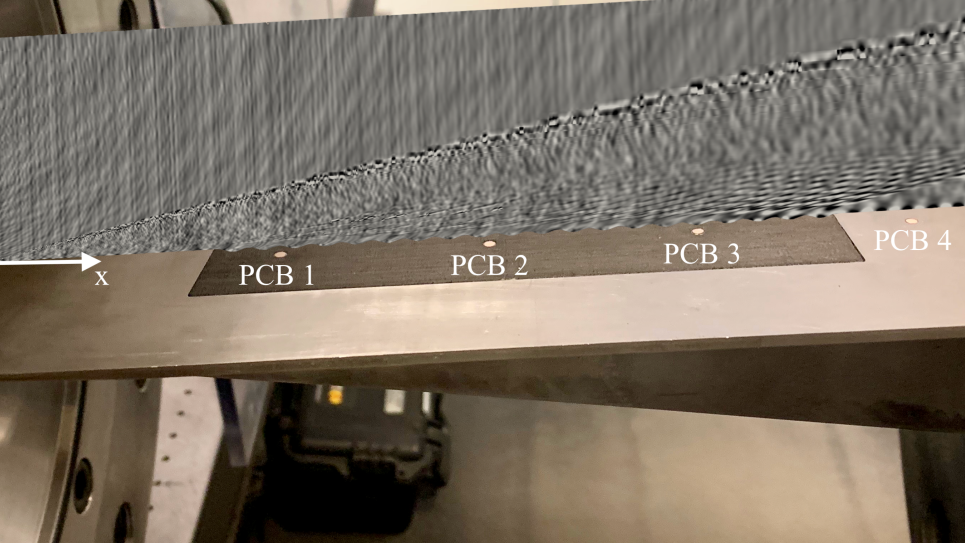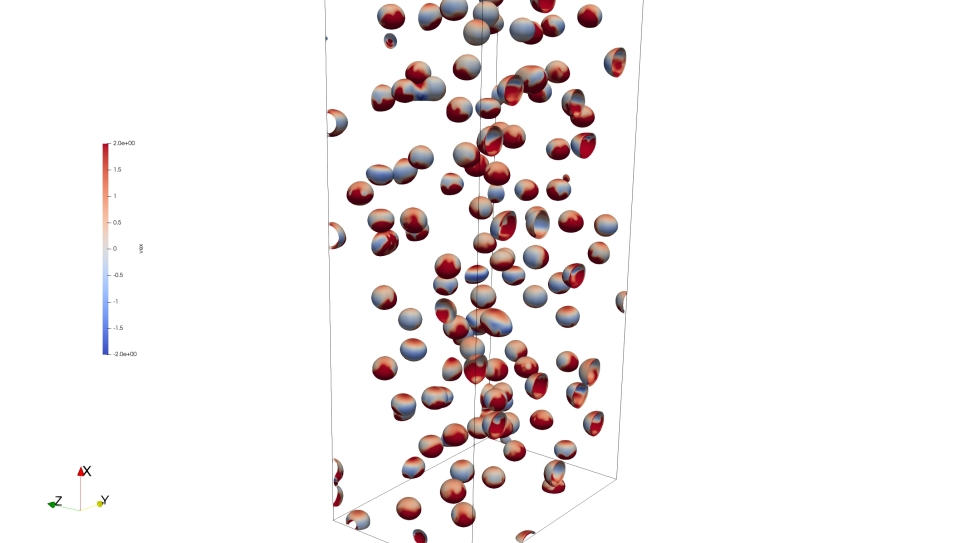We propose to conduct high-resolution numerical simulations of the Richtmyer-Meshkov instability, in the context of the on-going SciDAC-2 science application project titled "Simulations of turbulent flows with strong shocks and density variations" (Dr. Sanjiva Lele, P.I.), supported by the Department of Energy. Richtmyer-Meshkov instability (RMI) occurs when an interface separating two fluids of different densities is normally impinged by a shock wave. As a result, initial perturbations of the interface grow, producing vortical structures that ultimately lead to the turbulent mixing of the two fluids, if certain conditions (sufficient strength of the shock wave and sufficiently perturbed interface) are met. This instability occurs in a range of natural flows, such as the explosion of supernovae, and is of paramount importance in engineering applications, including inertial confinement fusion and supersonic combustion. Previous numerical studies of the Richtmyer-Meshkov instability have focused on the evolution of the instability at early times, for which comparison with theoretical results is possible. The lack of sufficient computational power and adequate numerical algorithms up to date has prevented attempts to study its evolution at later times, when the turbulent mixing between the two fluids occurs. The present project intends to fill this gap in the understanding of multi-material mixing, of which the Richtmyer-Meshkov instability is one of its more prominent examples. In doing so, several open questions regarding the differences between the classical description of turbulent mixing in shear flows and that occurring in a non-stationary shock-driven flow will be answered (e.g., anisotropy at large and small scales, influence and persistence of initial conditions, inertial-range scaling in non-stationary turbulence, etc.). Our simulations are coordinated with recent and planned future experiments on RMI mixing at Los Alamos National Laboratory (Dr. Kathy Prestridge, P.I.) which use novel non-intrusive diagnostics. The experiments serve as validation data for the large-scale turbulence dynamics but face extreme challenges in measuring the multi-scale multi-material RMI flows. Direct numerical simulation of RMI mixing will provide a unique database to advance the state-of-the-art in this field. In addition to increasing the scientific knowledge of the physics behind this problem, the numerical datasets obtained from the high-resolution simulations will also guide our concurrent efforts in developing reducedorder models of turbulent multi-material mixing that can be later applied to lower-resolution numerical simulations of complex flows in engineering applications where the RMI is present. Our approach uses two different numerical codes, Hybrid and FDL3DI-SU, which are both high-order accurate and well suited for high-fidelity simulations. They differ in the treatment of flow discontinuities. Both codes are mature and have already been used in large-scale production runs on different machines, including the ANL Intrepid BG/P. We will evaluate and compare the codes on low to moderate grid resolution cases of realistic Richtmyer-Meshkov problems; this will allow us to choose the most appropriate algorithm for the high-resolution production runs, and will provide us with estimates of the numerical errors inherent in the simulations. Our previous INCITE allocations, awarded in 2009 and 2010, have enabled us to complete an unprecedented study of shock/turbulence interaction and to initiate our study on multimaterial mixing. This new proposal aims to continue those efforts into the final stage of our SciDAC-2 project.


